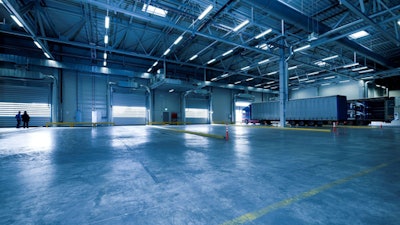
The food and beverage Industry is responsible for nearly one-third of global greenhouse gas emissions, and food demand is projected to increase by as much as 60% by 2050. These factors make applying an aggressive environmental, social governance (ESG) strategy very daunting for many food and beverage companies. However, there are immediate, cost-effective steps organizations can take to improve energy efficiency and safety at their sites to meet mounting pressure from consumers and investors.
Adopting energy efficient LED lighting to replace outdated fixtures is one simple but effective way for companies to improve their ESG practices. LED lighting reduces energy consumption and maintenance costs over time while keeping workers safe.
Lighting should not be overlooked as an important part of an organization’s ESG plan. Here is a closer look at how LED lights can improve safety and sustainability within the food and beverage sector.
1. LED lighting reduces energy consumption. LED lighting is the most energy efficient lighting available and can reduce energy costs and shrink the carbon footprint for food and beverage operations while providing illumination that improves visibility. The Department of Energy notes that LED lighting emits very little heat and is 80% more efficient than conventional lighting. In many applications, this can translate into needing fewer light fixtures to provide the same amount of light, further helping to reduce total energy usage.
2. LED lighting offers advanced control capabilities. Unlike conventional light fixtures, LED lighting offers advanced controls functionality such as dimming, grouping and scheduling lights around the unique needs of a facility to further reduce energy consumption and carbon emissions. Utilizing controls with LED light fixtures enables the operator to dim the light output when maximum brightness is not required and create lighting schedules as needed. Moreover, many offerings with LED lighting controls are eligible for utility rebates, providing even greater savings.
3. LED lighting helps prevent workplace accidents. Research published in the Journal of Architectural Engineering estimates that better lighting can reduce workplace accidents by as much as 60% while also improving worker productivity. LED lighting increases visibility, which aids workers in using heavy machinery and identifying tripping hazards and other potentially dangerous conditions. LED lighting also provides superior color clarity, helping workers see color-coded signs and safety indicators more clearly. Conventional lighting is dimmer and casts an orange hue, which can interfere with color identification.
4. LED lighting reduces fire, explosion and corrosion hazards. Antiquated lighting fixtures may increase fire and explosion hazards. Older lighting technology incorporates bulbs, which rather than burning out, may explode and can ignite airborne particles such as dust. In areas with fine, dry material such as starches and sweeteners, even a small ignition can create a catastrophic event in a facility. Additionally, outdated lighting fixtures can pose a significant risk to food processing and logistics operations using ammonia as a coolant. Ammonia is highly flammable and can contribute to an explosive effect when a conventional bulb explodes.
5. LED lights are more durable and longer lasting. LED lights have a longer lifespan than traditional lighting, up to five times longer in many cases. They do not contain fragile filaments or bulbs and do not contain mercury, which is toxic in the event of bulb breakage. This leads to a longer and more stable life for the lighting fixture. By outlasting traditional lights, LED lights dramatically reduce maintenance needs, and that keeps workers safer by requiring fewer trips to elevated spaces in order to repair or replace fixtures.
The pressure of societal expectations on business operations is growing, and companies that aspire to be good corporate citizens will need to find new ways to respond to consumer and investor demands. ESG metrics are an increasingly important factor in an organization’s investor prospectus, and that includes the food and beverage sector and associated logistics operations. Improving sustainability and creating a safer, more equitable work environment is not only a social obligation — it is quickly becoming essential to access cash to capitalize expansion and invest in new product development.
While replacing outdated light fixtures with more efficient LED lighting won’t solve all ESG-related concerns in the food and beverage sector, upgrading to LED lighting can make a significant impact on energy consumption and worker safety, making it a no-brainer for all businesses looking to improve on ESG.

















